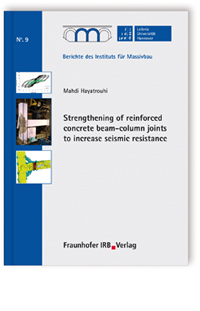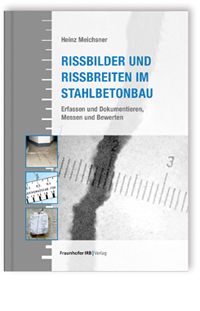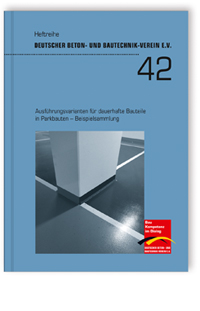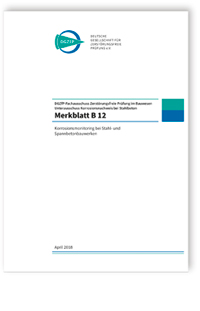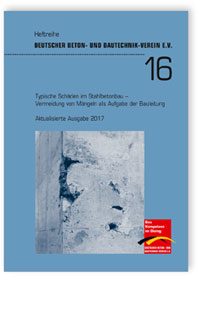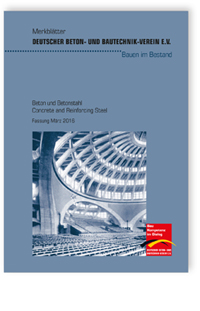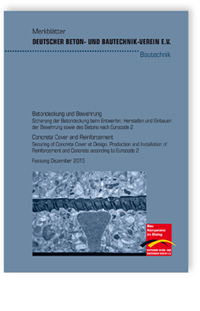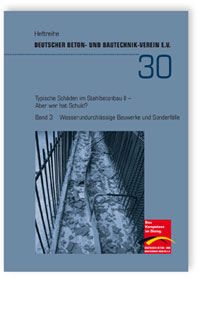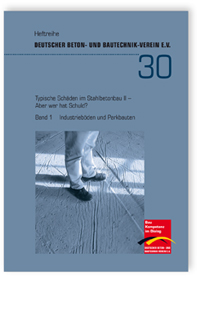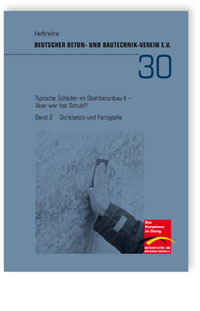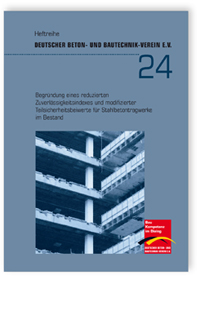Strengthening of reinforced concrete beam-column joints to increase seismic resistance (Softcover)
Details zum Buch
Autor
Mahdi Hayatrouhi
Erscheinungsjahr
2014
Herausgeber
Leibniz Universität Hannover, Institut für Massivbau, Steffen Marx
Bibliografische Angaben
340 Seiten, num. col. illus. and tabs.
Softcover
Fraunhofer IRB Verlag
ISBN 9783816791775
Sprache
Englisch
The categorized literature review of retrofitting and strengthening methods of reinforced concrete (RC) beam-column joints clarified that non-disruptiveness; practical implementation, ductility and perseverance of lateral resistance as well as economical issues still remain the most challenging aspects of seismically retrofitting the vulnerable existing RC beam-column joints. Current research attempted to observe the seismic design principals of RC frame structures in seismic retrofitting of the vulnerable frames as a strategy of retrofitting based on the capacity design concept. Accordingly, the beam sidesway mechanism was redefined for seismic retrofitting by relocating the beam plastic hinges far enough away from the joints. Consequently, with introducing innovative energy dissipation devices such as Multi Functional Corbels (HMFC) and Harmonica Damper Plates (HHDP), the innovative Retrofitting Techniques 1 and 2 (RT1 and RT2) were proposed. The introduced devices of HMFC and HHDP as a passive energy dissipation system absorb energy through inelastic deformations. The proposed RT1 and RT2 were experimentally evaluated through a series of 3/4-scale beam-column joint specimens under an extremely severe loading history. The excellent performance of retrofitted specimens through the experimental study confirmed that the proposed retrofitting techniques (RT1 and RT2) are able to retain structural integrity with the minimum strength and stiffness degradation. As intended, the energy dissipation capacity was dramatically increased and beam sidesway mechanism was actually formed. Furthermore, a series of non-linear finite element analysis using ATENA was carried out on all reference and retrofitted specimens. The FEM models were validated with experimental outcomes. Subsequently, the validated models were utilized to develop a new simplified method for upgrading based on the advantages of RT1 and RT2. In the new proposed innovative Retrofitting Technique 3 (RT3), HHDP was replaced by Frictional-Bending Damper Plate (HFBDP) which dissipates energy based on friction and bending. The effectiveness and reliability of the proposed RT3 was investigated through a numerical analysis. As confirmed through experimental and numerical investigation, all acceptance criteria of ACI Committee 374 [ACI 374.1-05] were effectively satisfied by the proposed retrofitting techniques.
- Abstract
- Kurzzusammenfassung
- Acknowledgments
- Table of contents
- List of figures
- List of tables
- Notation
- Introduction
-
- Introduction
- Motivation of the research
- Objectives
- Organization of the research
- Background and State of the Art
-
- Introduction
- Seismic behaviour of substandard RC beam-column Joints
- Retrofitting and strengthening techniques of beam-column joints
- Design approaches by codes of practice
- Seismic Retrofitting by Developing the Beam Sidesway Mechanism
-
- Introduction
- Seismic design principals of structures and joints
- Performance-based retrofitting through developing the beam plastic hinges
- Innovative Multi Functional Corbels (HMFC)
- Innovative Harmonica Damper Plates (HHDP)
- An Innovative strengthening and retrofitting technique through Multi Functional Corbels (HMFC), Retrofitting Technique 1 (RT1)
- An Innovative strengthening and retrofitting technique through HMFC and Harmonica Damper Plates (HHDP), Retrofitting Technique 2 (RT2)
- Experimental Program and Development
-
- Introduction
- Test specimens, energy dissipation devices and retrofitting
- Loading setup
- Instrumentation
- Experimental tests and results
- Test results and summary of findings
- Numerical Analysis and Simulations
-
- Introduction
- Implemented constitutive models in ATENA
- Element types
- Solutions of nonlinear equations
- Numerical models for reference units
- Sensitivity study
- Numerical models for retrofitted specimens
- Comparison the results of FE analysis and experimental test
- Developing a new upgrading method, Retrofitting Technique 3 (RT3)
- Conclusions and Recommendations
-
- Conclusions
- Recommendations for further research
- References
-
- Appendix A: Supplementary Reviews of Laboratory Activities
- Appendix B: Scheme and Details of Loading Setup
- Appendix C: Installation of Specimens into the Loading Setup
- Appendix D: Decomposition of Specimen Deformation
- Appendix E: Concept of Relative Energy Dissipation Ratio
